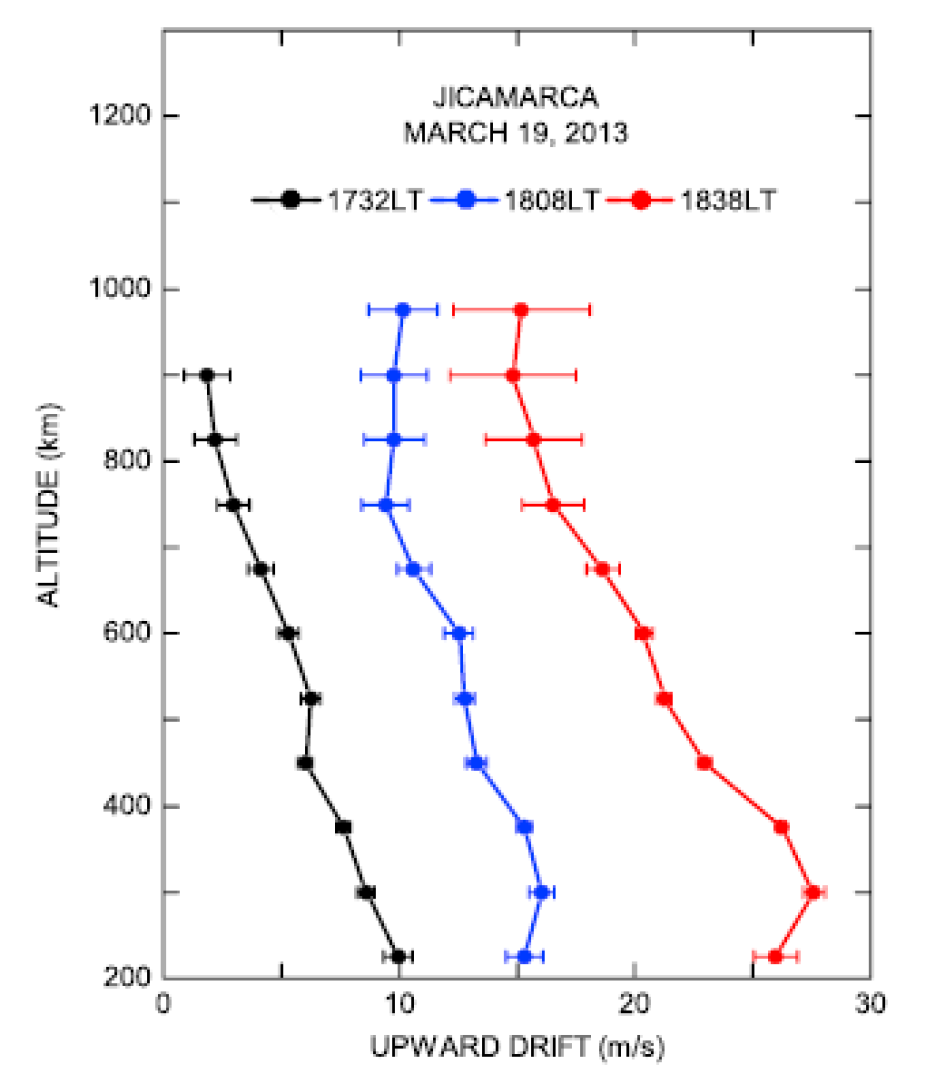HAO author: Astrid Maute
The low latitude ionosphere is one of the dynamic regions of the Earth’s upper atmosphere. The morphology of this region is controlled by radiative and coupled chemical, neutral and plasma transport processes. Equatorial electrodynamics plays a fundamental role on the low latitude plasma density, total electron content (TEC), and on plasma structures and waves extending from the E region to the protonosphere.

Height variation of quiet time evening vertical drifts over Jicamarca for moderate solar flux conditions(after Fejer et al., 2014).
Ground-based and satellite measurements over the last six decades determined the climatology of quiet and storm time equatorial electrodynamic processes. Extensive theoretical and numerical simulations, particularly in the last two decades, investigated the main electrodynamic driving mechanisms. These combined studies have led to major advances in the understanding of the short-term variability of equatorial electrodynamics, which is essential for the accurate forecast of low latitude ionospheric weather, and its effects on ground- and space-based technological systems. In this work, we review the main properties of low latitude electrodynamics, focusing on recent results, and briefly mention some outstanding questions and suggest possible future directions for more complete understanding of this challenging topic.